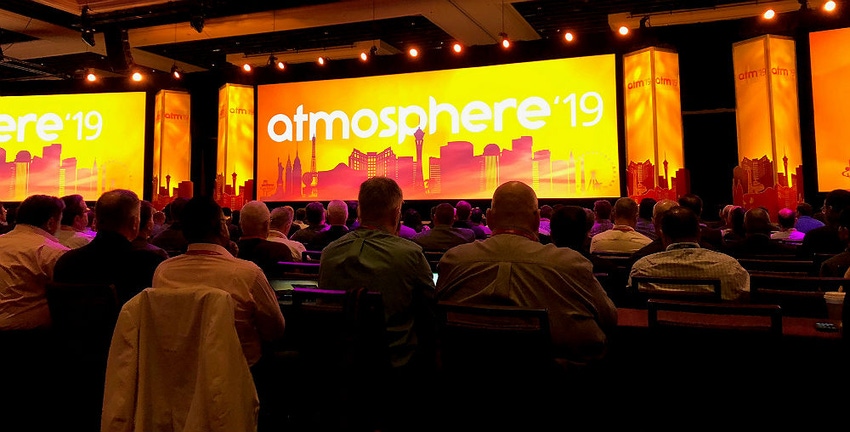Aruba is expanding its MSP program with a nod to those moving to X-as-a-service business models.

Networking, security, the IoT — they’re all heading to the edge, says Aruba co-founder and president Keerti Melkote.
The “edge,” of course, is edge computing, one of the hottest areas in all of information and communications technology (ICT). Aruba, company executives say, wants to “master” the edge, which is short-hand for besting Cisco, Palo Alto Networks and other competitors for supremacy there.

HPE/Aruba’s Keerti Melkote
To achieve this, Aruba has to convince the tech world that it’s much more than the plucky wireless networking company HP bought in March 2015. In particular, Aruba must demonstrate that it’s a true leader ideally positioned to make the most of edge computing.
This week in Las Vegas at its annual Atmosphere conference for partners, customers, developers and analysts, Aruba is making that case. To buttress its claims, the Santa Clara, California, company unveiled technology, program enhancements and strategies here that, taken as a whole, offer a compelling argument. Here’s what you need to know.
Aruba Is Becoming a Big Company (or Division)
In 2018, Aruba generated roughly $3 billion in sales. That’s three times what it did when HP bought the company. Today, Aruba’s reach extends to 500,000 customers, 15 million access points and 1 billion switch ports. Aruba has also been awarded 4,000 patents.
In the next few years, the HPE business aims to be a $5 billion company/division. To achieve this, Aruba has invested time and money expanding its portfolio. Whereas wireless networking and mobility provided Aruba with an estimated $18 billion total addressable market (TAM), SD-WAN, campus core networking, SD branch office automation, edge networking and more give it a $40 billion TAM.
In North America alone last year, Aruba generated $1.5 billion in annual sales. That was up 11 percent year over year. Thanks to its expanded portfolio and investments into partner recruitment, inside sales capabilities and field personnel, Aruba believes it can achieve 20 percent growth in North America this year, according to Lou Serlenga, senior vice president of North American sales.
Aruba Is a Security Company
Though it offers a portfolio of security technologies, Aruba has struggled to call itself a security company. No more, says Jon Green, vice president and chief security technologist at Aruba. Not only does Aruba win security awards (it won four at this year’s RSA security conference), the company has taken a leadership position in certain areas. Take the company’s newest technology, ClearPass Device Insight.
From a single pane of glass, ClearPass Device Insight automates “the discovery and fingerprinting of all connected devices and IoT devices on any wired or Wi-Fi network — regardless of vendor,” according to Aruba. Using machine-learning technology and crowdsourcing, ClearPass Device Insight helps partners answer one of the most popular questions customers ask most: “Who or what is on my network?” says Green. Partners who have seen the technology say it is a significant leap forward.
“We’re kinda thrilled,” says Bill Buckalew, vice president of partner sales at Optiv Security, an Aruba security partner based in Denver. “Ask anyone how many pieces they have on their network and they won’t be able to tell you.”
The reasons are many. Some connected devices don’t use the IP protocol. Others are sealed and/or non-upgradeable. And millions have no built-in security. Add it all up and you have …
… a mountain of woe for network administrators. Armed with ClearPass Device Insight, however, Aruba partners can help identify what’s on a customer’s network, dole out specific privileges, monitor device behavior and enforce policies when needed.
Aruba Is a Channel-Centric Company, Today and Tomorrow
Today, Aruba engages roughly 6,000 partners. They are responsible for 95 percent of the company’s revenue. To put that into perspective, Aruba is more partner-dependent than rival Cisco, which has long benefitted from having one of the most loyal, best-trained and financially motivated channels.
As with other vendors, Aruba prefers to co-sell with partners at the Global 2000 and mid-enterprise level. (Think customers with more than 1,000 employees.) But beneath that level, Aruba sales are all channel-driven. Give its expanded portfolio and market momentum, the company will likely add 1,000 or so additional partners in North America this year, according to Jim Harold, vice president of North America channels.
Harold says Aruba especially is looking for partners that can help it in the SMB space; in fact, increasing SMB penetration is one of the company’s four sales priorities in 2019. (The others are growing market share in access and core networking, capitalizing on security momentum and expanding Aruba’s in the data center.)
To attract new partners and satisfy existing ones, Aruba announced several new benefits for partners at Atmosphere. These include new financial incentives and go-to-market assistance. Partners who attract new customers to Aruba can qualify for 8 percent in additional discounts, for example. Those that achieve a new SD-Branch Competency, which requires two sales and two engineering certifications, can qualify for rebates totaling 16 percent, according to the company. The new financial uplifts are consistent with HPE’s broader push to make more incentives available when possible.
Then there are Aruba’s five new “plays,” which amount to codified sales motions and activities that have been proven to work for Aruba and its partners. The new “High Five” plays are designed to provide partners better support and information for growing sales in edge computing, campus access, SD branch automation, campus core networking and the data center.
Aruba Is Getting Serious About MSPs
A year ago, Aruba launched an MSP program. It was quite the challenge as the company had to work out with partners as to who would own Aruba’s equipment.
With that question largely behind it, Aruba is expanding its MSP program with a nod to helping those who are rapidly moving to X-as-a-service business models. Among other things, the company has made updates to its platform (there is a more comprehensive dashboard, better trending tenant data and updated management and provisioning capabilities, for example). Aruba has also improved its MSP incentive program. (Think rental/subscription-based pricing models made possible by HPE Financial Services, a concierge service for on-boarding customers and a new MSP marketing campaign.)
Also new: Aruba will name its first MSP Partner of the Year later this week. Stay tuned.
About the Author(s)
You May Also Like


